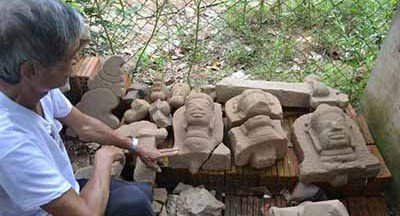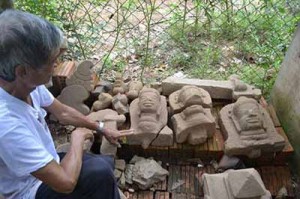A joint excavation team composed of archaeologists from the Ha Noi University of Social Sciences and the Humanities (USSH) and Da Nang’s Museum of Cham Sculpture discovered the foundations of the century-old Cham Temple Towers at Qua Giang 2 Village, Hoa Phuoc Commune, Hoa Vang District, Da Nang. The excavation lasted for almost a month on a 300-meter square area.
Cham Complex was a spiritual refuge for the Cham people during the late 10th century. Some bricks were discovered at the excavation site with subtle patterns and suggested that the Cham people collected bricks from old, destroyed towers and used those to build new ones. One foundation unearthed is 10 meters long and seven meters wide. The second is 6.2 meters long, while the third is around 20 meters long.
Important artifacts like a West-facing sandstone perron; sculptures of a “makara” or monster; and a sandstone altar were also discovered at the site. Three stone heads with intricate sculptings were also found, among that of Siva, the most powerful god of Hinduism. This particular discovery proved how crucial Hinduism was in the religious facet of the Cham people. Hundreds of stone and terracotta fragments made by the Cham, Vietnamese and Chinese people between the early 10th and 11th centuries were also unearthed.
The discovery of the remains of the Cham Temple Towers is an important event in Vietnam’s history because it revealed a hundred-year old culture that was interesting, mysterious and simply beautiful.

